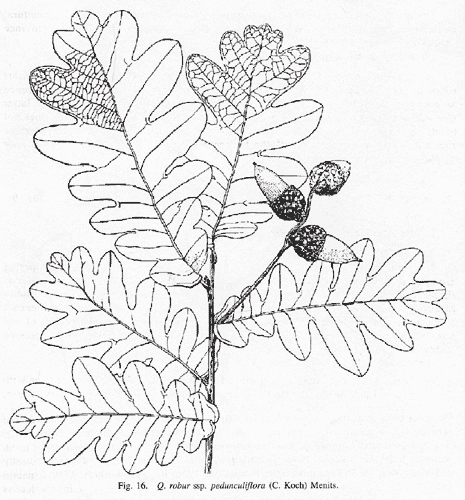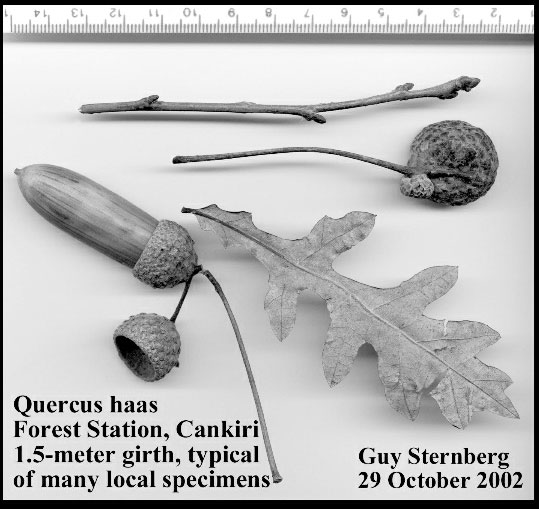| Quercus pedunculiflora | |
| Author | K.Koch 1849 Linnaea 22: 324 |
| Synonyms | robur subsp.
pedunculiflora (K.Koch) Menitzky 1967 pedunculata subsp pedunculiflora (K.Koch ) Maire 1908 pedunculata var pedunculiflora (K.Koch) Stojan. 1948 brutia var. pedunculiflora (K.Koch) O.Schwarz 1934 haas var. atrchoclados Borbas & Bornm. 1889 hass auct. eur. not Kotschy 1862 robur var. erucifolia (Stev.) Asch. & Graebn. 1911 pedunculata f. erucifolia (Stev.) Medwedev 1908 pedunculata var. longipetioleata Medwedev 1908 pinnatipartita (Boiss.) O.Schwarz 1934 pedunculata var. pinnatipartita Boiss. 1879 erucifolia subsp pinnatipartita (Boiss.) O.Schwarz 1936 kurdica Wenzig 1886 erucifolia Stev. 1857 (Camus : n° 168) erucifolia subsp longipes (Stev.) O.Schwarz 1936 robur subsp longipes (Stev.) Hedge & Yalt. longipes Stev. 1857 ( Camus : n° 167 ) Bull. Soc. Imp. Naturalistes Moscou 30: 387 |
| Local names | |
| Range | Asia Minor; the Caucasus; the Balkans; to 1800 m; |
| Growth habit | reaches 15 m tall; |
| Leaves | 8-17 x 6-9 cm; like those of Q.robur but a little thicker; dark green, slightly glaucous, hairless above; yellow grey tomentose beneath; 4-5 pairs of lobes with deep sinuses; secondary veins at 60-80° with midrib; petiole to 2 cm long; |
| Flowers | April - May |
| Fruits | acorn 2-3 cm long, 1.5-2 cm in diameter; stylopodium tomentose; long stalk; enclosed 1/3 by cup; cup 1.8-2.5 cm in diameter, with warty, appressed, rusty yellow scales; |
|
Bark, twigs and |
bark grey, furrowed; |
| Hardiness zone, habitat | hardy; all types of soils; very drought resistant; |
| Miscellaneous |
-- A. Camus : n° 166 ; -- Q.haas Kotschy 1862 |
| Subspecies and varieties |
|
| Pictures |
|

